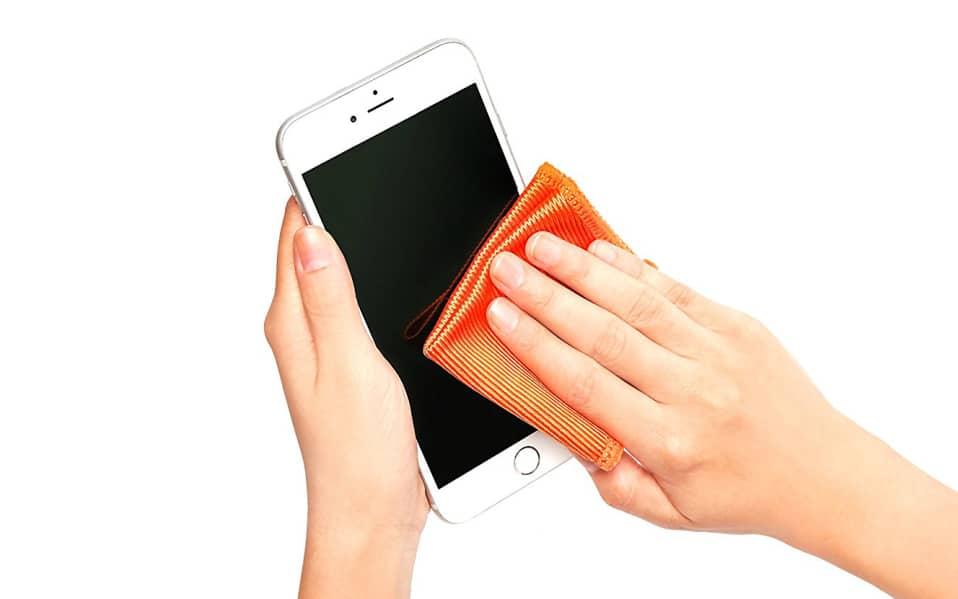At this point, where COVID-19 or coronavirus cases are increasing by the day, most of us are frantically washing our hands and trying not to touch our faces. However, do you think that is enough? What about our phones that are almost like an extension of our hands?

According to experts, smartphones are nothing less breeding ground for germs. They are much dirtier than you might think.
The U.S. Centers for Disease Control and Prevention and the World Health Organization are continually asking users to disinfect frequently touched surfaces. Our Smartphones are one of them.
On January 17, ZDNet took to Twitter to ask a simple question: How often do you disinfect your phone? The results were mind-boggling. A whopping 60 percent of the audience admitted that they never cleaned their phone. Only 18.5 percent of the people said they clean their phones weekly, and 7.4% inferred they would clean it after being sick.

Daniel R. Kuritzkes, chief of the Division of Infectious Diseases at Brigham and Women’s Hospital, explains:
It’s possible, theoretically, for this to live on a smartphone. If you had it out and someone sneezed or coughed on it, and then you handled the phone, you could pick up infection that way.
However, regular cleaning products might end up damaging your smartphone. The best ways to clean your phone without damaging the display and internal components are:
70% isopropyl alcohol
Initially well known tech companies urged users not to use everyday cleaning products on smartphones as they would end up damaging the coating on the screens.
However, disinfectant wipes containing 70% isopropyl alcohol have now been declared safe to use on phone screens.

If you don’t have those handy, you can always use a damp cloth with disinfectant or an alcohol-based solution to clean your phone. Make sure you don’t let any extra liquid seep into the ports. Other than this, don’t apply the cleaning agent directly to your phone.
Water and soap method
In case you don’t have access to alcohol wipes, swabs, and disinfectant, you can also go for the basic water and soap method. Just be careful with the amount of water you use so that it doesn’t get into the phone’s ports. This method is recommended for people with waterproof (or water resistant) devices.

All you need is Lint-free cloth like a microfiber, water, cotton swabs, and handwash (preferable Dettol based).
Follow these steps to clean your device properly:
- Turn the phone off and remove any attachments.
- Make a soap solution in any container with warm water.
- Wet the cloth in the solution, drain it and wipe down the phone (avoid ports and buttons).
- Use dry cotton swabs to soak in any water that made its way to the ports and other openings.
- Let the phone dry thoroughly before turning it on.
Note: if you have rubbing alcohol, use the same method with it.
Don’t forget the case
Before putting the case back on the phone, wipe it inside out and let it dry completely. If you have a plastic or silicone case, you can even wash it under running water for 20 seconds.

Conclusion
A study published in 2017 in the journal Germs, found a host of bacteria, pathogens, and viruses on 27 phones owned by teenagers. The scientists put forth a hypothesis that “this may play a role in the spread of infectious agents in the community.”
Emma Hayhurst, a microbiologist at the University of South Wales, says:
We don’t need to be obsessively washing our phones right now. If people are coming into contact with coronavirus patients, then, yes. Wash your phone all the time. Not because there is evidence that it will transmit via phone but because there is no evidence that it won’t.
![How to Clean Your Phone to Avoid Coronavirus [Guide]](https://news.masscommunicationtalk.com/wp-content/uploads/2020/03/5c1d59e8ad9571587e132fb3-1024x512.jpg)